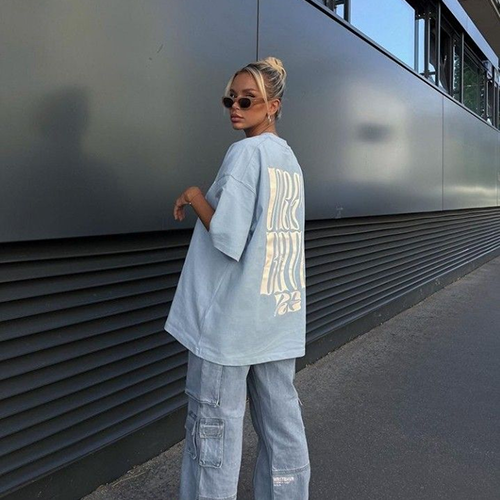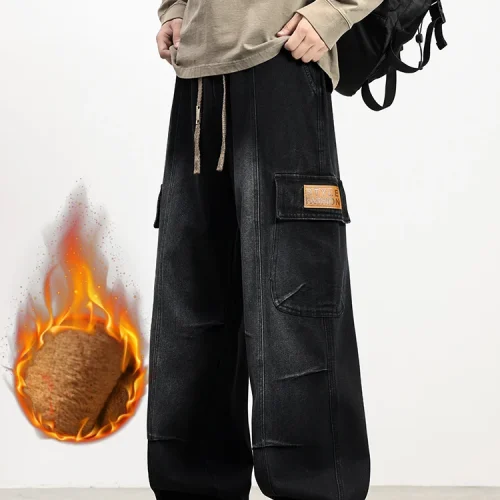The T-shirt was never meant to be a revolution.
It began humbly, stitched from practicality, born in factories and barracks. But what started as underwear quietly became the uniform of every generation that refused to be defined by rules.
Today, in 2025, the T-shirt isn’t just an item of clothing — it’s a manifesto.
A message on fabric. A personal archive. A mirror of how we live, think, and belong.
1. From Utility to Icon
The T-shirt’s origin story is as unglamorous as it gets.
Early 20th-century laborers and soldiers wore it for one reason: comfort. The light, breathable cotton made it ideal for long days in the heat.
But the transformation began in Hollywood’s golden age. When Marlon Brando and James Dean pulled on white tees in A Streetcar Named Desire and Rebel Without a Cause, something clicked. The T-shirt became rebellion — youthful, raw, and electric.
From there, it leapt into pop culture, carried by musicians, artists, and dreamers.
The Beatles wore them. So did Warhol.
In the decades that followed, subcultures — punks, skaters, ravers, minimalists — each redefined what the T-shirt could mean.
Every generation wore it differently, but always with purpose.
2. The Language of Fabric
A T-shirt speaks long before you do.
Its fabric tells a story: soft-washed cotton whispers of familiarity; heavyweight jersey asserts structure and confidence; eco-blends hint at mindfulness.
Modern wearers care about more than fit — they care about feel.
A great tee doesn’t just sit on your shoulders; it belongs there. It molds to your life — the way your body moves, the way the day unfolds.
The renewed interest in premium materials is part of a broader cultural shift. After years of fast fashion, we’ve returned to what matters most: quality over quantity.
Because a well-made T-shirt isn’t just clothing. It’s an emotion stitched into shape.
3. The T-Shirt as Social Commentary
Every slogan, every graphic, every print is a statement.
In the 1960s, political movements adopted the T-shirt as their voice. In the 1980s, music did the same. By the 2000s, fashion houses began using it to rewrite the meaning of luxury.
Now, in the digital era, the T-shirt has evolved again.
Your tee might not say “Vote!” or “Save the Planet” anymore, but it communicates identity. Wearing a local designer, a sustainable label, or even a blank tee — it all sends a message.
Minimalism is no longer about silence; it’s about clarity.
And clarity is the new rebellion.
4. The Tailoring of Simplicity
The myth of the “basic” tee is just that — a myth.
Behind every perfect T-shirt lies a meticulous craft:
- Shoulder slope: too steep, and it feels sloppy; too flat, and it stiffens the look.
- Cotton density: 170 gsm for breathability, 220 gsm for structure.
- Seam placement: invisible yet crucial to flow.
- Neckline tension: the silent detail that defines elegance.
The best tees, like those from emerging brands such as Trendytroop, are engineered for balance — between structure and softness, between everyday wear and elevated design.
Because luxury today doesn’t need embellishment.
It needs restraint.
5. The Emotional Fit
Ask anyone about their favorite T-shirt, and you won’t get specs — you’ll get stories.
The concert tee from your first festival. The vintage band shirt that feels like home. The one that’s slightly frayed but fits perfectly.
Clothing holds memory. And the T-shirt, in its simplicity, holds it best.
It’s the piece that survives trends, breakups, travels, and moves. It absorbs scent, time, and emotion.
It’s the garment you don’t think about — until it’s gone.
6. The T-Shirt and Modern Workwear
Workwear once meant rigidity — suits, collars, codes.
Now, it’s freedom.
The modern workspace is creative, mobile, fluid. The T-shirt fits right in — smart under a blazer, casual with trousers, confident with denim.
Founders, designers, and creators wear it not to reject professionalism but to redefine it.
To say: I don’t need a uniform to be taken seriously.
The T-shirt democratized power dressing. And that may be its quietest, boldest act yet.
7. Sustainability as Status
Today, “cool” isn’t about the label — it’s about the lifecycle.
Shoppers care how their clothes are made.
They ask: Is it organic cotton? Is it ethically sourced? Is it built to last?
The answer shapes identity more than a logo ever could.
Sustainability isn’t a trend anymore — it’s a baseline expectation. The T-shirt, as one of the most mass-produced garments on Earth, stands at the center of that conversation.
Recycled yarns, plant-based dyes, and waterless production are becoming the new luxury standards.
Because the modern tee isn’t just worn. It’s chosen.
8. Cultural Universality
The T-shirt transcends borders.
In Paris, it’s tucked neatly into tailored trousers.
In Seoul, it’s layered oversized over cargo pants.
In New York, it’s monochrome minimalism.
In Saigon, it’s cropped, soft, and expressive.
No other garment travels this easily between worlds. It adapts, transforms, translates.
The T-shirt is the global passport of style.
9. The Influence of Subculture
Streetwear’s evolution reshaped how we see the T-shirt.
What started in skate parks and hip-hop scenes became a billion-dollar aesthetic. Logos became currency. Drops became events.
But the hype bubble has burst.
In its place, a quieter movement is emerging — one that values craft, comfort, and character.
Today’s subculture doesn’t live online; it lives within.
It’s about what feels real, not what looks viral.
And the T-shirt remains at its core — stripped down, honest, essential.
10. The Future of the Tee
Technology will transform how we make, wear, and experience clothing.
But even in an AI-designed world, the T-shirt’s appeal won’t fade.
Imagine tees embedded with temperature control fibers, biodegradable materials, and even digital personalization.
Yet the essence will stay the same — because you can’t innovate the emotion of comfort.
The T-shirt will remain fashion’s constant — the one item that connects every era, every person, every identity.
11. The Final Thread
The T-shirt has never shouted for attention.
It simply exists — quietly powerful, endlessly adaptable, unapologetically human.
We wear it not because it’s trendy, but because it understands us.
It’s the friend that grows old with you, the mirror of your moods, the blank page you rewrite every morning.
In a world obsessed with change, the T-shirt remains what it always was: the simplest, most perfect form of self-expression.








